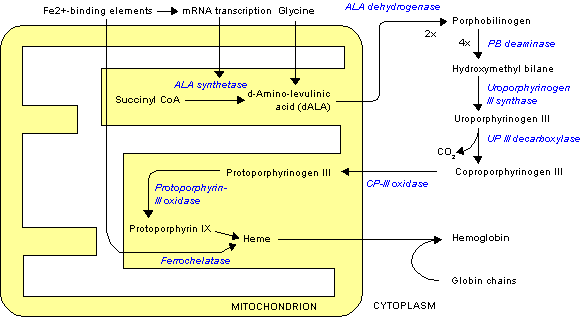Editor:
The prize winning paper by Jonathon E. Prousky, ND, FRSH and Dugald Seely, BSc, ND (candidate) in the February/March 2003 issue entitled "The Case Report on the Successful Use of Inositol Hexaniacinate for the Treatment of Achiorhydria: Its Possible Mechanism of Action Upon the Central Nervous System and Parietal Cell-Adenosine Triphosphate-Dependent K+/H+ Pump" was most interesting. I would like to suggest an additional reason for the effectiveness of the high doses of niacin (1000 mg three times daily) that were used initially to treat the 39 year-old, 'well-nourished' patient. In the article, "Vitamin B-3 and Schizophrenia" by A. Hoffer, MD, PhD, FRCP(C) in the April 2001 issue, Dr. Hoffer explained that high doses of niacin change liver enzyme function, and that small elevations in liver enzyme tests were often seen with niacin therapy, but were no cause to discontinue the treatment. This change in liver enzyme activity would probably stimulate the production of much higher quantities of heme.
Heme is required for the synthesis of the P450 enzymes that are collectively responsible for the oxidation (and therefore the neutralization) of foreign chemicals, including drugs, pesticides and carcinogens. The P450 enzymes are also needed for the metabolism of adrenal hormones, fat soluble vitamins, fatty acids and for the synthesis of eicosanoids (so this includes the pro staglandins). (1,2) The correct balance and availability of adrenal hormones and also of eicosanoids control the flow of nutrients (including oxygen) into the cells. (3) Perhaps even more important, heme is needed for the production of red blood cells. (2) The consequent increase in the oxygen, and nutrient-carrying capacity of the blood, as well as the cell's renewed ability to receive the required nutrients, along with niacin's effect on the central nervous system and the parietal cells, fully restored the production of stomach acid in the 39 year-old patient.
However, the transformation of chemicals by the P450 enzymes can result in either increased or decreased toxicity, depending on the nutritional status and the toxicity of the patient. For example, low protein diets are associated with lower rates of drug metabolism. On the other hand, diets that are very low in carbohydrates deplete the necessary cofactors of P450 enzymes. (1) People with severe deficiencies from low stomach acidity and stress or toxicity are especially vulnerable when the liver and its enzymes are overtaxed. (1,2)
Very high doses of niacin (3,000 mg or more daily) can cause liver damage, diabetes, an inflamed stomach, eye damage and elevated levels of uric acid which can cause gout. The inositol hexaniacinate form of niacin is not known to cause any side effects, but nutritionally knowledgeable doctors advise that neither form of niacin be taken in large amounts without a nutritionally-oriented doctor's counsel. (4)
In addition, high doses of niacin can cause an acute attack in someone with porphyria, simply because niacin stimulates the production of heme. (5) The latter is produced by the pophyrin enzymes. Mutations or defects in the eight precursors of porphyrin enzymes cause the various inherited or acquired errors of metabolism in porphyria patients. Because heme can be produced in every cell, anything that triggers the production of heme to a larger extent can initiate a highly damaging, and often extremely painful, free-radical chain reaction that affects many organs and systems throughout the porphyria patient's body. (2) Not only the patient, but also all of his or her physicians need to know what to avoid, it is sometimes difficult and it can be impossible to avoid a porphyria attack, but every effort must be made; an acute hepatic porphyria attack may cause paralysis or can even kill the patient. (6,7)
The body responds differently to the various mutations. Different porphyrias (or mutations that lead to the tendency for porphyrins to accumulate throughout the body) need different treatments. It is essential that patients who may have porphyria receive the proper testing and interpretation of the tests, as well as the correct treatment, in as timely a manner as possible. (7) For more information please contact the American Porphyria Foundation, P.O. Box 22712, Houston, Texas 77227 USA. Their website is www.enterprise.net/apf. The website password <HOUSTON> ensures ready access for physicians.
Judy Kitchen
3637 Serra Road
Malibu, California 90265 USA
Phone/Fax 310-456-6837
References
(1.) Guengerich, Peter K, Influence of nutrients and other dietary materials on cytechrome P-450 enzymes, Department of Biochemistry and center in Molecular Toxicology, Vanderbilt University School of Medicine, Nashville, TN 37232-0146 or American Journal of Clinical Nutrition 1996; 61 (supplement) 651S-8S.
(2.) Wilson, cynthia, chemical Intolerance: Hallmark Feature of MCS and Porphyria, Our Toxic Times, chemical Injury Information Network, MT, October 1996.
(3.) Murray, Michael T., ND, Encyclopedia of Nutritional Supplements; Prima Publishing, CA 1996.
(4.) Lininger, Schuyler W., Jr., DC, Gaby, Alan R., MD, Austin, Steve, ND, Drown, Donald J., ND, Wright, Jonathan V., MD, Duncan, Alice, DC, CCH, The Natural Pharmacy, Prima Publishing 1099.
(5.) Wilson, Cynthia, Porphyrinogenic Substances, Chemical Injury Information Network, MT. 406-5472255.
(6.) Ridley, Alan, The Neuropathy of Acute Intermittent Porphyria, Quarterly Journal of Medicine News Series XXXVIII, No. 151, July 1969.
(7.) Porphyria News, American Porphyria Foundation, Texas, Spring 2003.
COPYRIGHT 2003 The Townsend Letter Group
COPYRIGHT 2003 Gale Group



